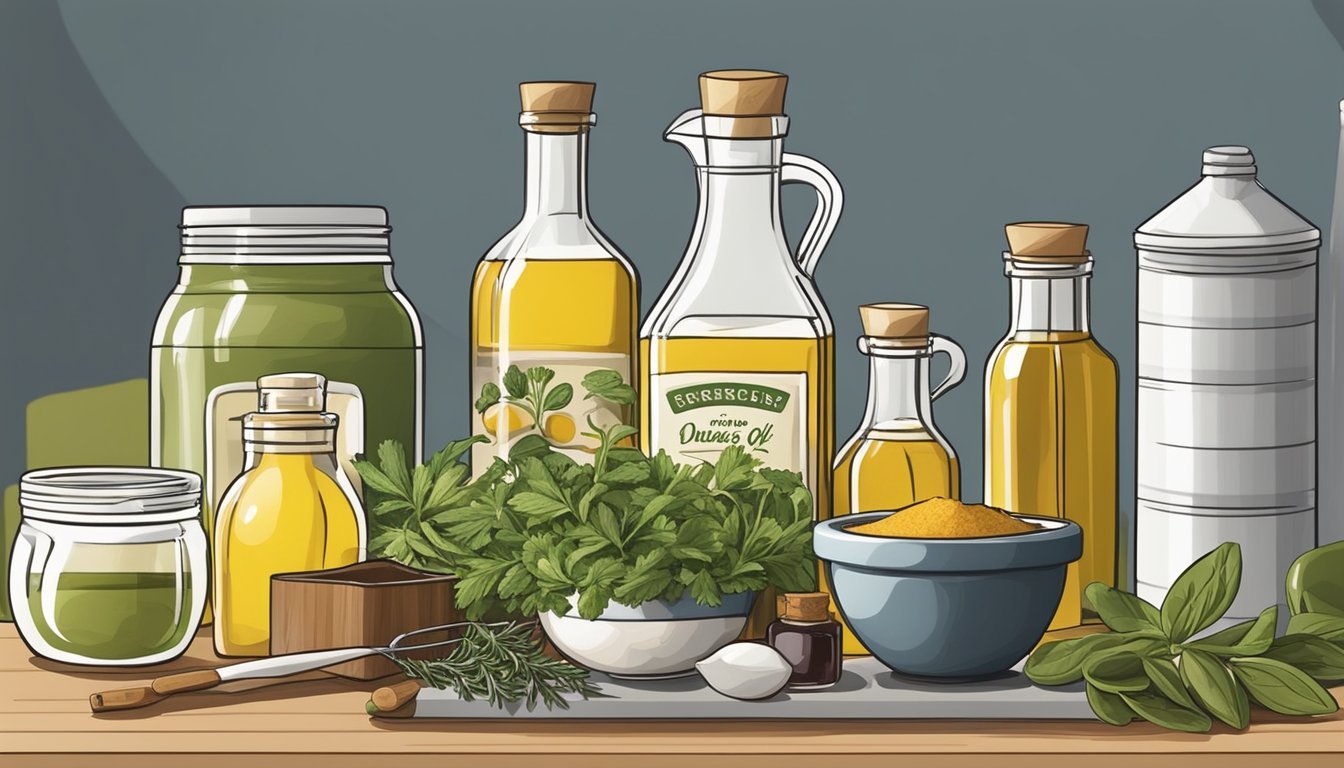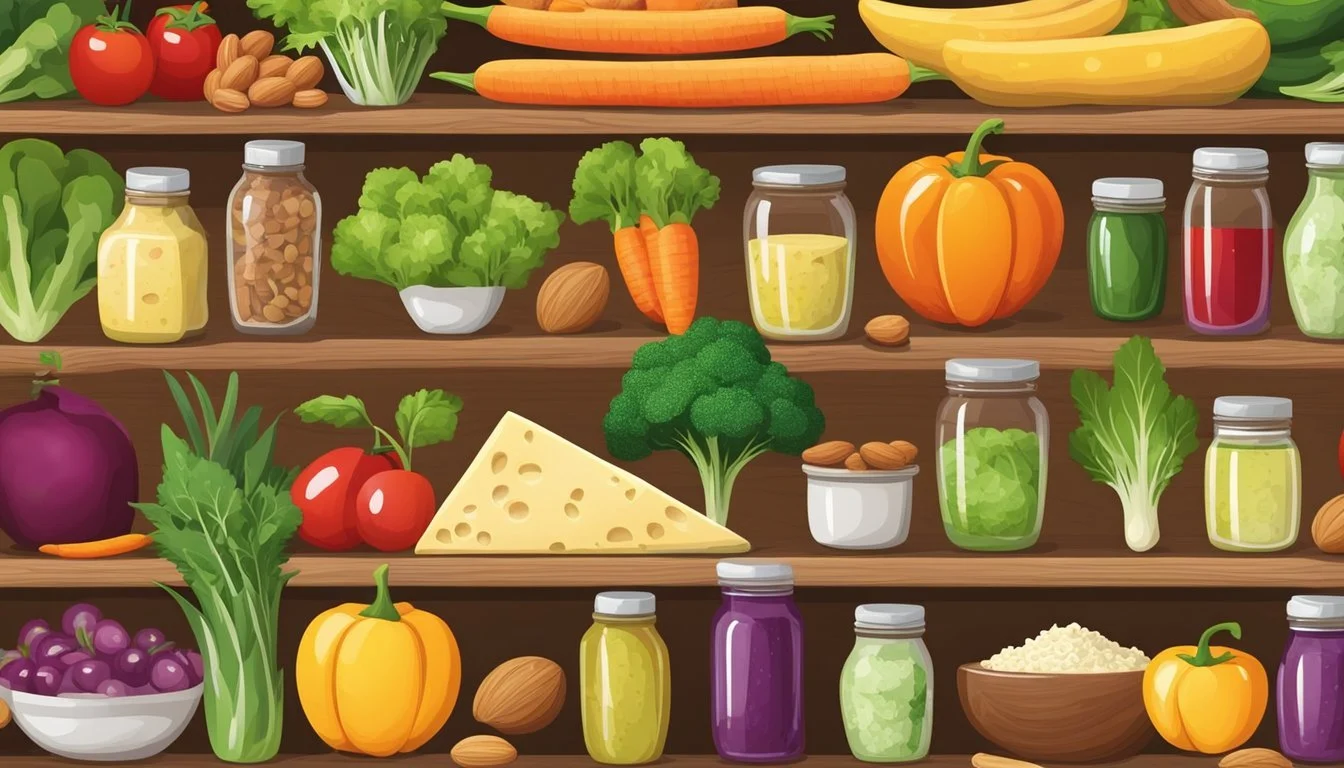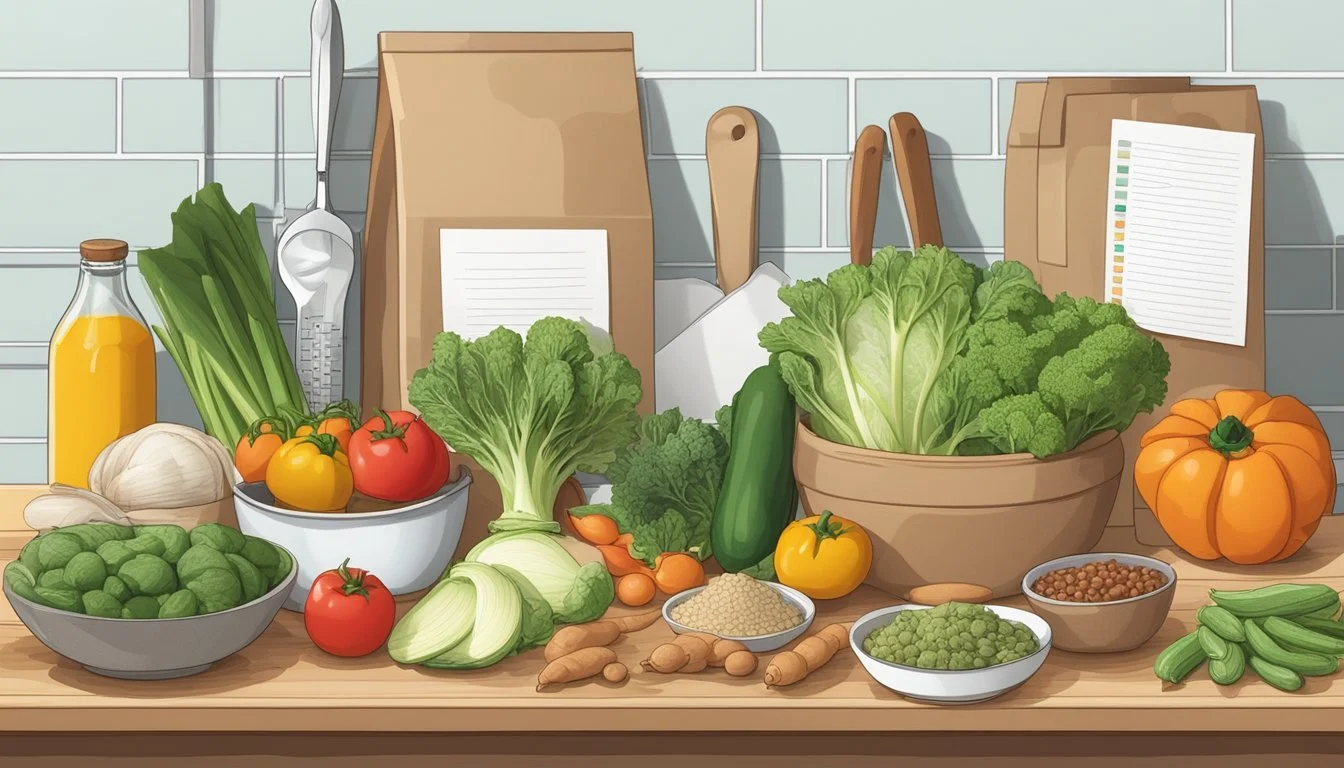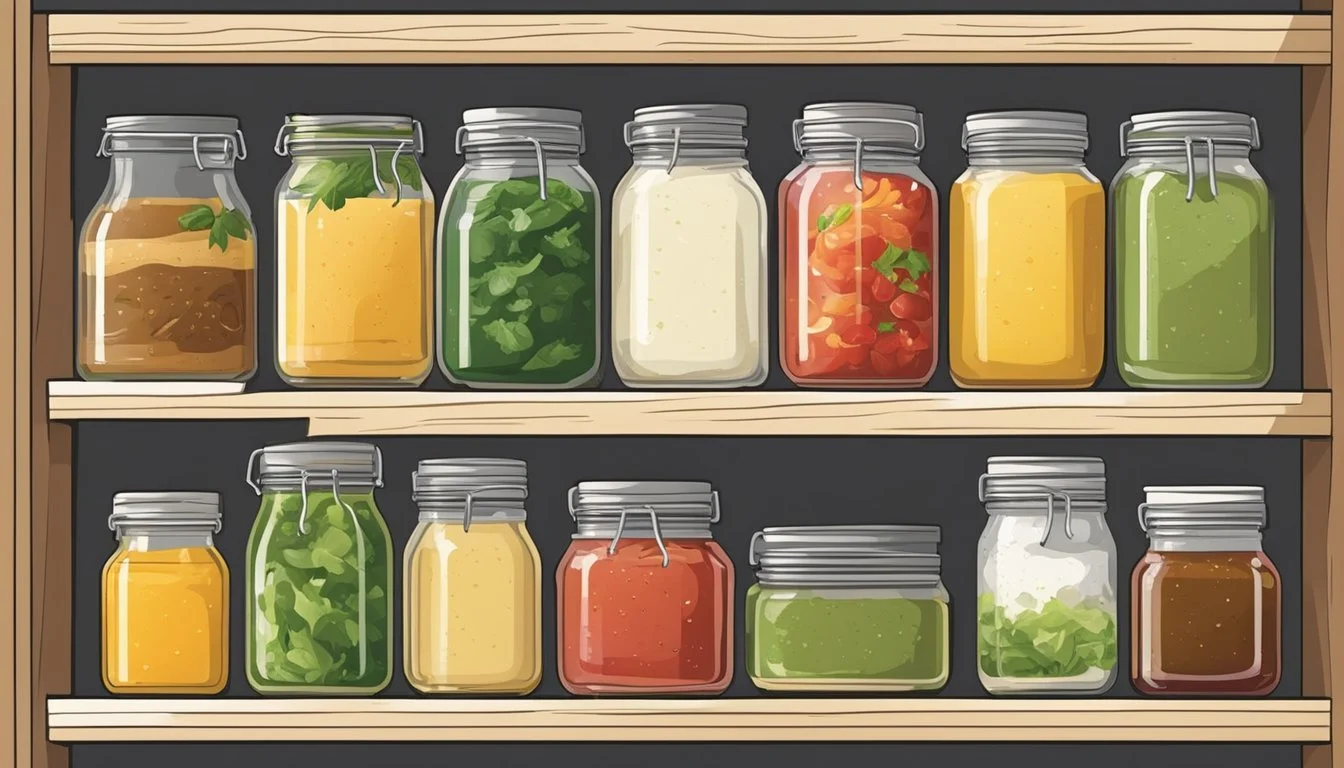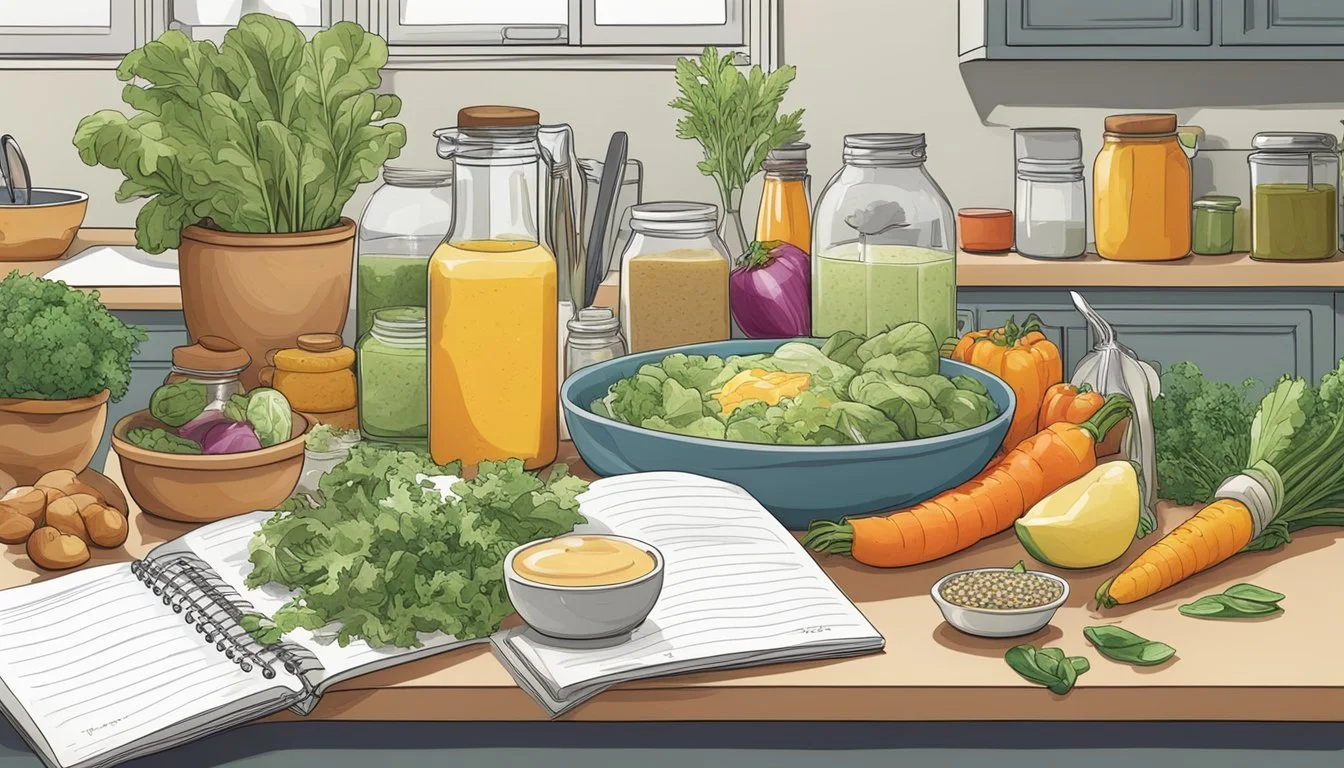Pantry-Based Salad Dressing Recipes
Simple and Flavorful Creations
Creating delicious salad dressings from pantry staples is an essential skill that transforms simple greens and vegetables into a delightful meal. Pantry-based dressings rely on ingredients commonly found in the home kitchen, making it convenient for cooks to whip up a flavorful complement to their salads anytime. Utilizing ingredients such as vinegars, oils, dried herbs, and mustards, these recipes not only add a personal touch but also allow for a variety of tastes without the need for a last-minute grocery run.
The versatility of pantry dressings is evident in the broad array of flavors that can be achieved. From tangy vinaigrettes to creamy emulsions, the combinations are endless, ensuring there is a dressing to suit every palate and salad composition. The key to a successful pantry dressing lies in the balance of flavors – the acidity from vinegars or citrus juice cutting through the richness of oils, while herbs and spices provide depth and complexity.
Mastering the art of making salad dressings from pantry ingredients also promotes healthier eating habits. Home cooks can control what goes into their dressings, steering clear of the preservatives and excessive sugars often found in store-bought versions. With a few simple ratios and creative use of pantry items, anyone can elevate their salads with dressings that are both satisfying and beneficial.
Pantry Essentials for Salad Dressings
A well-stocked pantry serves as a foundation for creating versatile and delicious salad dressings. Quality oils, a range of vinegars, and a selection of herbs and spices can transform simple ingredients into a flavorful dressing.
Oils and Vinegars
Oils:
Olive oil: A staple for its rich flavor, it pairs well with various vinegars and seasonings.
Other Varieties: Canola, avocado, or walnut oils offer different flavor profiles and nutritional benefits.
Vinegars:
Balsamic: Provides a sweet and tangy taste, ideal for robust dressings.
Red Wine: Offers a sharp and fruity edge, suitable for hearty salads.
Apple Cider: Adds a milder tartness, complementing lighter dressings.
Oil to Vinegar Ratio: A classic vinaigrette uses a 3:1 ratio of oil to vinegar.
Herbs and Spices
Fresh and Dried Herbs:
Basil, oregano, and thyme: Common herbs that can be used fresh or dried for convenience.
Whole Spices: Whole seeds like mustard can be crushed or soaked for intensified flavor.
Garlic and Onions:
Minced garlic or onion powder: They provide a depth of flavor, acting as a base for many dressings.
Herbs and Spices Usage: They should be added sparingly and adjusted according to taste.
Condiments and Extras
Mustard and Citrus:
Dijon Mustard: Acts as an emulsifier and adds sharpness to dressings.
Lemon Juice: Introduces a fresh, bright note, especially when fresh is available.
Briny Additions:
Capers and Olives: Deliver a salty kick and can be finely chopped to blend smoothly into dressings.
Pantry Staples: Ensuring a variety of these additional ingredients can expand the flavor profile of homemade dressings.
By utilizing these pantry essentials, anyone can create a wide range of delicious and personalized salad dressings to enhance any salad.
Basic Techniques and Recipes
Homemade salad dressings bring freshness and personal touch to any salad. They are versatile, allowing anyone to adjust flavors to their taste, and can be made with simple pantry staples.
Simple Vinaigrette
A Simple Vinaigrette is a basic emulsion of oil and vinegar, perfectly balanced for a light, flavorful addition to greens.
Ingredients:
3 parts oil (olive, canola, etc.)
1 part vinegar (balsamic, red wine, etc.)
Salt and pepper to taste
Method:
Whisk vinegar with salt and pepper until dissolved.
Gradually add oil, whisking until emulsified.
This classic dressing can be easily adjusted; adding ingredients like Dijon mustard, garlic, or herbs can further enhance the flavor.
Creamy Dressings
For Creamy Dressings, the base often includes ingredients like mayonnaise or yogurt, contributing a rich texture and flavor profile to dishes.
Ingredients:
1 cup mayonnaise or Greek yogurt
1 tablespoon vinegar or lemon juice
Seasonings as desired (garlic, herbs, etc.)
Method:
Combine all ingredients in a bowl.
Whisk thoroughly until smooth.
One can tailor these dressings to their cooking needs by incorporating different herbs, spices, or even pureed avocado for a unique twist.
Citrus-Based Dressings
Citrus-Based Dressings offer a zesty, fresh option using the juice of citrus fruits as the acid component, pairing beautifully with both savory and sweet salads.
Ingredients:
2 parts oil
1 part citrus juice (lemon, lime, orange, etc.)
Salt and pepper to taste
Method:
Combine citrus juice with salt and pepper.
Gradually whisk in oil until the mixture is well combined and slightly thickened.
As with other dressings, one can introduce additional elements, such as honey for sweetness or chili flakes for heat, to achieve the desired flavor profile.
Food Pairings and Salad Ideas
Creating the perfect salad dressing from pantry staples can transform even the simplest ingredients into a memorable dish. Thoughtful pairings enhance the natural flavors of the salad components, whether you're working with fresh vegetables, hearty grains, or protein-rich elements.
Leafy Greens and Vegetable Salads
Leafy greens like romaine and a mix of colorful veggies serve as a blank canvas for vibrant dressings. A tangy vinaigrette made with ingredients like lemon juice and Dijon mustard can elevate a tomato and lettuce salad, while a creamy Southwest dressing pairs excellently with a crunchy medley of bell peppers, corn, and black beans. Here's a brief guide:
Romaine and Tomato Salad: Enhance with a zesty Italian dressing.
Veggie Mix Salad: Complement with a creamy garlic or Southwest dressing.
Pasta and Grain Salads
Pasta and grains absorb flavors beautifully, making them ideal for more robust dressings. A lemon pesto dressing intermingled with a pasta salad introduces a fresh yet rich taste. For a nutritious grain salad, toss lentils or chickpeas with an olive oil-based vinaigrette, adding depth to the earthy legumes.
Pasta Salad: Pair with a herb-infused pesto or balsamic dressing.
Grain Salad: Grain salads like quinoa or farro pair well with a light lemon vinaigrette.
Protein-Enriched Salads
For protein-enriched salads like chicken or tuna (What wine goes well with tuna?) salad, dressings serve both to flavor and moisten the ingredients. A classic tuna salad can be uplifted with a mustard-infused dressing, while a simple vinaigrette can complement a salad topped with grilled chicken or white beans.
Chicken Salad: Dress with a simple vinaigrette or creamy ranch.
Tuna Salad: Mix with a Dijon mustard dressing to bring out the flavor.
Customizing Your Dressing
The key to a pantry-based salad dressing is the ability to adjust dressings to personal taste and dietary needs while maintaining a balance of flavor and texture.
Adjusting Flavors and Textures
To enhance the flavor and texture of any dressing, it's essential to adjust the levels of salt and pepper. Using freshly ground black pepper and kosher salt can distinctly improve the taste profile. For a fruitier edge, one can add a dash of sugar or a spoonful of honey, which can round out the sharpness of vinegar or citrus. To attain a creamier texture without the use of cream, consider incorporating Greek yogurt or pureed soft tofu.
Salt: Start with a small pinch and increase as needed.
Pepper: Freshly ground black pepper adds a subtle heat and aroma.
Sugar/Honey: A touch of sweetness can balance acidity.
Yogurt: For a thicker, creamier texture that's still light.
Creating Signature Blends
One creates a signature blend by considering the desired taste profile - whether it's spicy, smoky, or herbaceous. For a warming heat, a touch of cayenne pepper or chili powder works well. Smoky flavors can be introduced with a pinch of smoked paprika or by using chipotle. Incorporating cumin or coriander offers an earthy note. For each recipe, one’s unique blend should reflect both the chosen ingredients and the individual’s taste.
Spicy Elements: Cayenne pepper, chili powder.
Smoky Twist: Smoked paprika, chipotle.
Earthy Notes: Cumin, coriander.
Allergy-Friendly Substitutes
When addressing allergies, simple swaps can ensure the dressing is enjoyable for everyone. Swap out nuts in pesto-based dressings with seeds like pumpkin or sunflower. Honey can be replaced with maple syrup or agave nectar for those with honey allergies. Utilize non-dairy yogurts for a dairy-free version that still provides a creamy consistency. Always examine each ingredient for potential allergens and consider cross-contamination if preparing food for someone with severe food allergies.
Nut Substitutes: Seeds such as pumpkin or sunflower.
Honey Alternatives: Maple syrup, agave nectar.
Non-Dairy Choices: Plant-based yogurts for creaminess.
Storing and Preserving Dressings
When making pantry-based salad dressings, ensuring their longevity and freshness is crucial. Proper storage methods can greatly extend their usable life, maintaining flavor and quality of the dressings.
Fridge Storage Tips
In the refrigerator, homemade dressings should be kept in airtight containers to protect them from picking up odors from other foods and to prevent oxidation. It's imperative to note that most homemade dressings will retain their quality for up to two weeks when refrigerated at a temperature below 40°F (4°C). When storing dressings in the fridge:
Use glass containers with tight seals or plastic containers specifically designed for storing foods.
Clearly label each container with the date of preparation to help track its shelf life.
Freezer and Pantry Options
For longer storage, some salad dressings can be frozen, though this may affect texture and consistency upon thawing. However, vinegar or citrus-based dressings typically freeze better than creamy varieties. Using an airtight container or freezer-safe bag is essential to protect against freezer burn and maintain quality. If freezing, leave some room at the top of the container for expansion. As for the pantry, only dressings with high vinegar or oil content and no perishable ingredients are suitable for cupboard storage, and even then, only for a limited time. It is generally safer to store dressings in the fridge or freezer.
Health and Nutrition Information
In crafting pantry-based salad dressings, understanding their health impact and nutrition profiles is critical. Homemade dressings not only offer customization but also provide transparency in caloric and nutrition content, essential for a balanced diet.
Counting Calories and Nutrition Facts
The caloric content of homemade salad dressings can vary greatly, depending on the ingredients used. A serving size is generally considered to be 2 tablespoons. Dressings based on olive oil, for example, have approximately 120 calories per tablespoon, but combining it with vinegar or citrus juice can reduce the caloric density. It is important to account for the calories contributed by dressings to maintain dietary balance. For more precise nutritional information:
Calories: Check the serving size and calculate based on individual ingredients.
Nutrition: Look for vitamins, minerals, and macronutrient balance on labels or nutrient databases.
Beneficial Ingredients for Health
When creating dressings from pantry staples, certain ingredients offer health benefits:
Olive oil: Rich in monounsaturated fats, it is considered heart-healthy.
Vinegar and citrus: These can add flavor without contributing significant calories.
Herbs and spices: They enhance taste and can provide antioxidants.
Homemade dressings can adhere to various dietary preferences, including vegan and vegetarian options, through careful selection of ingredients. For example, using plant-based milk instead of dairy, or maple syrup in lieu of honey, can make a dressing vegan.
A focus on whole, minimally processed ingredients contributes to the healthy quality of these dressings, which can be tailored to individual health goals and dietary restrictions.
Shopping and Preparation Strategies
When preparing to buy ingredients for pantry-based salad dressings, the grocery store offers a variety of options. Shoppers should aim for versatility and longevity. Prioritize basic ingredients such as vinegars, oils, and spices that can combine to create a plethora of flavors.
At the Store:
Vinegars: Stock a selection—balsamic, red wine, apple cider, and white wine vinegars.
Oils: Olive oil is a staple, but also consider avocado or grapeseed oil.
Spices: Choose a range of dried herbs and spices like oregano, thyme, basil, garlic powder, and mustard seeds.
A well-prepped pantry allows for simple and quick assembly. Allocate prep time to divide and store bulk purchases for easy access. Reusable containers or jars can keep ingredients fresh and within reach.
Groupings: Place vinegars, oils, and spices in separate sections for ease of use.
Labeling: Mark containers with purchase dates to track freshness.
One should stock their pantry with these essentials to minimize grocery outings and reduce prep time. With these ingredients on hand, creating a custom salad dressing takes mere minutes and allows for experimentation without additional shopping.
Additional Uses for Salad Dressings
Salad dressings exhibit a culinary versatility beyond just being a blend for greens. They serve as an impactful ingredient, transforming the taste and texture of many dishes.
As Marinades and Sauces
Marinades: A well-crafted salad dressing can double as a marinade for proteins like chicken, fish, or tofu. The acid component, such as vinegar or lemon juice, tenderizes the protein while the oil and herbs infuse it with flavor. For example, an Italian dressing made with olive oil, garlic, and herbs like oregano and basil is perfect for creating a flavorful chicken destined for the grill.
Chicken Marinade: Italian dressing
Fish Marinade: Zesty ginger and carrot dressing
Sauces: Dressings provide a ready-made sauce for adding a flavor boost to burgers, tacos, or even stews and soups. A creamy avocado dressing can make an excellent sauce for tacos, adding both richness and zest.
Taco Sauce: Creamy avocado dressing
Burger Sauce: Ranch or blue cheese dressing
As a Base for Dips and Spreads
Dips: Transforming salad dressing into a dip is as simple as adjusting the thickness and enhancing the creaminess. For instance, adding Greek yogurt to an avocado dressing can create a satisfying dip for vegetables, chips, or crusty bread.
Vegetable Dip: Thickened avocado dressing with Greek yogurt
Spreads: Salad dressings can be repurposed as spreads for sandwiches and wraps. An Italian vinaigrette, thickened with a bit of mayonnaise or cream cheese, can become an aromatic spread that offers a distinct flavor upgrade.
Sandwich Spread: Italian vinaigrette blended with cream cheese
The adaptability of salad dressings as marinades, sauces, dips, and spreads demonstrates their substantial role in the kitchen beyond topping salads.
Innovative Recipe Ideas
Before diving into specific recipes, it's essential to understand that the innovative use of common pantry items can transform a simple salad into a globally-inspired dish or a seasonal treat.
Global Flavor Inspirations
Middle Eastern Zest: To craft a Middle Eastern-inspired dressing, one can blend olive oil with lemon juice, garlic, and harissa paste. This dressing pairs exceptionally well with salad recipes that feature ingredients like chickpeas (chole), cauliflower, and a sprinkle of walnuts for added texture.
Asian Fusion: A simple Asian dressing can be made with sesame oil, a dash of soy sauce, and a spoonful of honey. Add this to noodle salad with cherry tomatoes, pickled vegetables, (What wine goes well with pickled vegetables?) and a hint of dried fruit for a sweet and sour experience.
Seasonal and Festive Variations
Autumnal Delight: When fall arrives, a dressing that celebrates the harvest is ideal. Combine apple cider vinegar with a touch of Dijon mustard, maple syrup, and olive oil. Toss it with a salad consisting of roasted apples, celery, and dried cranberries.
Summer Picnic Twist: During the warmer months, a bright and light dressing enhances any outdoor dining experience. Blend yogurt with fresh herbs, lemon juice, and a hint of garlic. This creamy dressing is a delightful addition to a salad with crisp grape tomatoes, cucumbers, and even some crumbled bacon for a smoky contrast.

